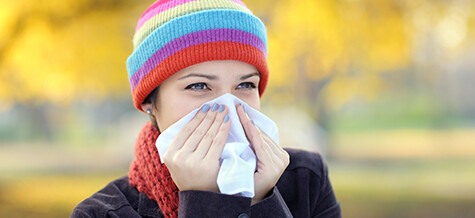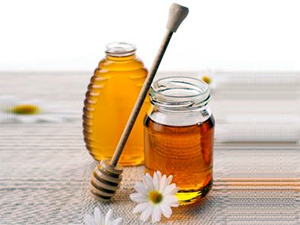
While autumn signals the beginning of allergies for some folks, others tend to suffer year round. Ragweed is the main irritant for my husband during the fall, starting in early August and running through mid-October. I’m one of the lucky ones who have year round sensitivities to dust and mold. Either way, allergies can leave one feeling tired, and just plain miserable.
While many of us with allergies have used over the counter and prescription medicines I’ve personally experienced their side effects:
Dry mouth, flu like symptoms, drowsiness, heart palpitations and anxiety. It feels like I’ve had ten cups of extra strength coffee. I know others have spoken of stomach upset, insomnia, headaches, and low libido. One of the things I’ve learned is that over the counter antihistamines can actually increase one’s appetite, thus causing weight gain.
Following years of using those products, and enduring allergy shots for 2 years, I can honestly say I’ve had much better results with these natural alternatives.
Dairy! It wasn’t until a number of years ago that a friend of mine who is a singer mentioned that her voice coach could always tell when she had had dairy. She loves cheese as do many of us! Anyway, she noted that dairy produces mucous and therefore the associated “draining” into the back of her throat would result in tonal differences in her voice. The cheese, a dead give away! At that moment I realized that no doctor had ever mentioned to me to cut back on dairy when my allergies were flaring or if I was coming down with a cold. Often, my colds would turn into sinus infections and then I was put on a round of antibiotics. I am being honest when I say that there were years when I was on antibiotics at least 3 times in a year. That was so not good for the immune system! Once I learned the effects of dairy, I started cutting back and noticed pretty quickly that I was much less congested and could breathe better. Do I still eat cheese? Yes, but I make the choice to limit the amount and frequency that I used to take in. For me, it’s been totally worth reducing dairy in my daily diet.
It’s apple season! We’ve all heard the saying “An apple a day keeps the doctor away!” Whoever coined that term really knew what they were talking about! Apples are loaded with flavonoids, a class of antioxidant. One of these flavonoids is called quercetin, which is a natural anti-histamine, also providing anti-infammatory, antiviral and immune boosting properties. Who knew an apple could give us so much! Jonagold and Golden Delicious varieties contain the highest levels of quercitin, however one must eat the skin as that’s where the flavonoids are. And talking about the skin, apples are doused with some of the highest levels of pesticides so if you can afford it buy organic. If you can’t, just remember to wash the skin really well with warm, soapy water. During peak allergy season I benefit from eating at least two per day.
One of the ways in which I’ve learned to live healthy AND love good food affordably is by buying in season. For those of you who garden, you know what I’m talking about. Food offers such great medicinal value to our lives, especially when it’s grown locally. It tastes amazing when in season and we aren’t paying the extra costs of shipping produce from across the country or the world. Have you noticed that the flavor isn’t all that good by the time we get produce that’s possibly weeks off the vine? When apple season is over I’ve learned to be creative by boosting my intake of tea and red wine, also high in quercitin. I’ll talk about that more in another post! Apples- low in fat and high in fiber, a win/win!
Local honey! Let me start by saying that while honey can be a wonderful daily aid in dealing with allergies, it is very high in sugar and NOT recommended for those with diabetes or weight issues or infants under the age of 12 months due to possible bacterial issues.
That being said, honey was not on my radar until moving from the east coast to Colorado 5 years ago. Every region has it’s own allergens and my acupuncturist mentioned the value of local, raw, unheated and unpasteurized honey to me. The pollen from any particular region is what makes ones allergies flair. Local, raw, unheated and unpasteurized honey gives you the most benefit from pollen. Studies have confirmed symptoms are greatly reduced by ingesting honey daily, whereupon local pollens are slowly introduced into one’s system. I noticed the difference within a few months after our move and my daughter is giving small dosages to her young children to help with their allergies. I’ve heard a daily dose of 2 -3 tablespoons is recommended, but remember that honey is high in sugar and is very sweet. I’ve hit a “happy” place of 1 Tablespoon per day during the height of my allergies without packing on the extra pounds. I highly urge that one starts with what feels right to them and work up to a place in which your symptoms respond well.
Using a Neti Pot has been an important part of my allergy maintenance program for nearly a decade. I know many of you have heard of this nice little pot that can be purchased inexpensively pretty much everywhere now.
Using a Neti pot comes from an old cleansing method from the Hatha Yoga tradition of India. The Sanskrit term means “water cleansing” but in our language we call it “nasal irrigation.” (Yoga108.org)
I rely on my Neti most mornings and before going to bed to flush allergens (mostly dust for me) out of my sinus cavities for easy breathing and sinus health. The saline water solution keeps the inside of my nose moist, too. I prefer a ceramic Neti pot that I can throw in the dishwasher for cleaning once a week. I also keep non-iodized salt in the same area with the pot. I add a small amount of the salt (many Neti salt packages comes with a spoon for measuring) in the pot with warm water, then flush one side, then the other. I find the flushing very soothing. If you experience any discomfort or pain you might try angling your head a bit differently.
There’s been news that one should use distilled or boiled water as tap water can contain bacteria that you don’t want to be sending back into your body. I’ve used distilled water and as mentioned I throw my Neti pot in the dishwasher once a week to really clean. Lots of folks can’t quite wrap their heads around this little pot and ritual and I get it…It’s an activity I do ALONE! Some friends have embraced the saline nasal rinses that basically do similar flushing. I say, whatever works for you, but do consider nasal health a priority if you do suffer from allergies. If you can tolerate the pot, remember it’s less expensive in the long run and better for the environment.
Since adopting the above natural remedies over the past 10 years I can honestly say I have significantly reduced my allergy symptoms and feel much better.

Autumn is a beautiful time of year, and these non-toxic hints for dealing with Fall allergies should make it a little more enjoyable.
The best luck I’ve had with these natural, non toxic remedies is starting several months before your allergies begin. Most of us know when that is. Certainly we can’t always predict when “something in the air” will trigger us. For that reason I love tinctures. I’m very allergic to horses and if I know I’m going to be near a barn for any reason, I take a horse dander tincture with me. I’ll put a few drops on my tongue a couple hours before leaving and then add a few more if I need to. This particular brand, bioAllers, offers the same for hayfever, ragweed.
Lots of info here but I’m hoping that I’ve given you allergy sufferers some “food for thought”! (no pun intended ) I hope that one idea or a combination of these make for a more tolerable allergy season for you!
SEP



